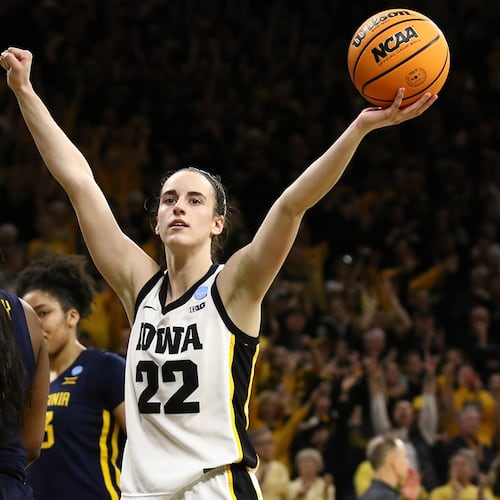The Hawks did many things from 1999 through 2007 – employed J.R. Rider; spent consecutive lottery picks on guys named Williams; saw their owners sue one another – but they didn’t make the playoffs. In the 2007 draft, they spent the third overall pick on Al Horford. They qualified for the postseason in each of the next nine seasons. Cause and effect.
Horford was both a cornerstone and the bridge between the Hawks’ best starting fives of this century. The first included Josh Smith, Marvin Williams, Joe Johnson and Mike Bibby. The second had Paul Millsap, DeMarre Carroll, Kyle Korver and Jeff Teague. The first topped out at 53 wins. The second won 60 games and reached the Eastern Conference finals. Those teams had different coaches. The constant was the man who won consecutive NCAA championships at Florida.
We around here fretted too much over whether Horford was a center or a power forward. He could be either, though the Hawks were better with him at the 5-spot. As it happened, his career coincided with the NBA’s move to pace-and-space, which meant big men were asked to do more than hunker down on the low block. Over his first eight seasons, Horford made 21 treys. He has averaged 84 over the past seven seasons.
Six years have passed since he left as a free agent. In one of those goofy Hawks moves, Mike Budenholzer and Wes Wilcox chose to sign Dwight Howard while Horford was still deciding where to go, all but guaranteeing he wouldn’t stay here. (By then, nobody wanted to play with Howard.) Horford signed with Boston.
What happened three times here happened twice there: Horford’s Celtics lost twice to LeBron James’ Cavaliers in the Eastern finals. Horford’s Hawks had been swept three times by Cleveland, once in a conference final that saw him ejected for dropping an elbow on the pest Matthew Dellavedova.
Horford signed with Boston for four seasons. He opted out of the fourth to sign a new four-year deal with Philadelphia. This marked the strangest thing this pragmatic pro has done. If any team didn’t need Al Horford, it was Philly. He joined a hulking roster that included Joel Embiid, Ben Simmons and Tobias Harris. That was the NBA season that was halted by COVID-19 and resumed in the Orlando bubble. The 76ers were swept in Round 1 by, er, Boston.
Realizing its error, Philadelphia traded him to Oklahoma City, which was tanking/rebuilding. With 28 games remaining, the Thunder told Horford to take the rest of last season off. He was 34, having worked for four clubs over five years. Now he was deemed superfluous to a bad team’s needs. Had the proud Horford become a journeyman?
Nope. In a mutual asset-dump, Boston sent Kemba Walker to OKC for Horford. With Robert Williams growing into a serviceable center, the Celtics needed a stretch-4 to complement gifted wings Jayson Tatum and Jaylen Brown. On Jan. 6, they were 18-21. They went 33-10 thereafter. They entered the playoffs as the East’s No. 2 seed. As of Wednesday morning, they were tied 2-2 with Milwaukee, the reigning champ.
Horford has averaged 15.9 points and 9.4 rebounds this postseason, not far off career bests. He has made 56.5% of his shots and 53.5% – whoa! – of his 3-pointers. He scored 30 points, a personal playoff high, in the Celtics’ vital Game 4 victory Monday. Sixteen came in the fourth quarter.
Giannis Antetokounmpo dunked on Horford in the third quarter and drew a technical foul for taunting. Horford responded by saying “OK,” meaning “not OK.” In the fourth quarter, Horford drove past Antetokounmpo, whomped down a dunk and – holy Dellavedova! – brushed the great Giannis with a celebratory elbow. Horford is 35, but he’s not done yet.
Because he does a bit of everything, Horford always has been hard to quantify. He’s a deft passer. He’s a solid defender. He has been a double-figure scorer each of his 15 seasons. He has become a 3-point shooter. Beyond all that, there’s a gravitas about him that makes him a natural leader.
The best I can do is label him one of the greatest teammates ever. Think about the Hawks’ different-but-excellent starting fives, both including Horford. Think about these Celtics. Think about Florida’s two NCAA titlists, which also included Joakim Noah, Corey Brewer, Lee Humphrey and Taurean Green.
During the 2007 SEC Tournament at the Georgia Dome, I asked several noted basketball men, Bill Raftery and Sonny Smith among them, to name the all-for-one Gators’ MVP. I got four different names, but every respondent mentioned Horford as no worse than a second choice.
That sounded, and still sounds, about right. Al Horford mightn’t be the best player on your team. But you’d want him on your team.
About the Author
The Latest
Featured

